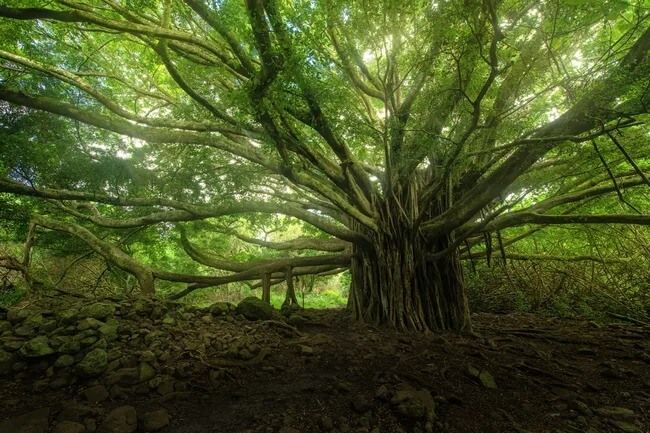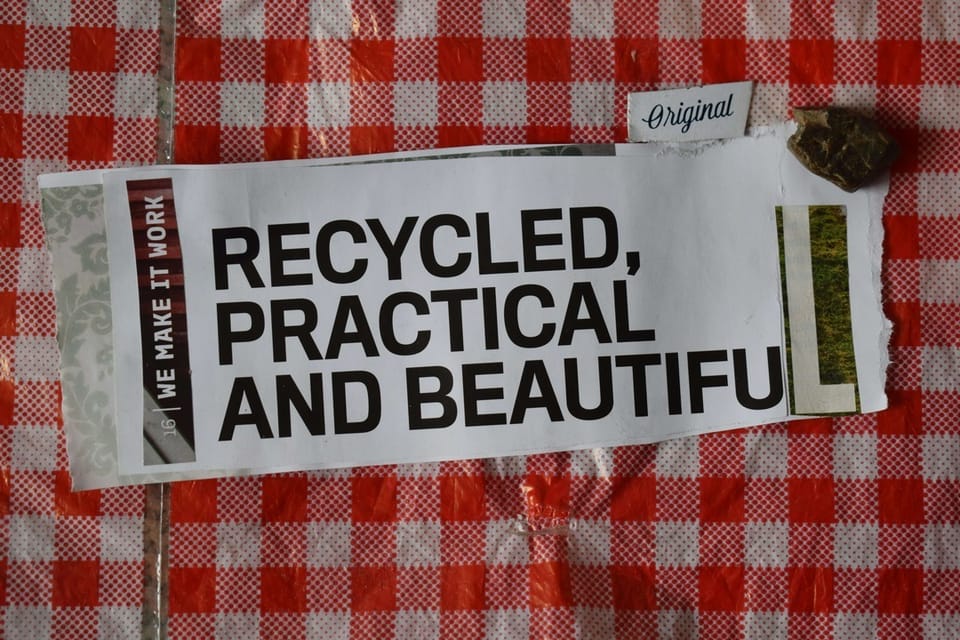What Are Old-Growth Forests and Why Are They Important?
More than just trees, old-growth forests are living archives of nature. With towering canopies, complex habitats, and carbon-storing power, these ancient ecosystems play a critical role in climate stability and biodiversity.

Old-growth forests are archetypal verdant, lush forests that hold an almost mythical place in our imaginations. As their name implies, old-growth forests are dominated by ancient trees and have been shaped by natural processes over the course of many years. Also known as primary or virgin forests, these forest ecosystems consist of native species and lack signs of damaging human activities.
From local provisioning of habitat to global regulation of the Earth’s climate, old-growth forests support life on many scales. These invaluable ecosystems, however, are disappearing, due to direct and indirect human actions. Efforts to protect and preserve old-growth forests are underway, but need to be increased to stop the unsustainable loss of one of Earth’s most precious resources.
What Percentage of Old-Growth Forest Remains Today?
There are an estimated 1.11 billion hectares of old-growth forest left on Earth — an area roughly the size of Europe — as reported by the U.N. Food and Agriculture Organization (FAO). According to the IUCN, primary forests make up only 36% of the world's surviving forests.
Nearly two-thirds of the world’s remaining old-growth forest can be found in Brazil, Canada, and Russia. Nobody knows exactly how much old-growth forest is left in the United States, partly because of the unclear lines distinguishing primary and secondary forests.
Old-Growth Forest Definition
Despite general agreement that old-growth forests are important, there is not consensus on what exactly an old-growth forest is. FAO defines an old-growth forest as “a naturally regenerated forest of native species, where there are no clearly visible indications of human activities and the ecological processes are not significantly disturbed.” An amended definition includes traditional activities of indigenous and local communities as part of old-growth forests.
Old-growth forests may also be called primary forests, mature forests, frontier forests, or virgin forests. The terms frontier and virgin forest are slightly more narrow because they imply that the forest has never been logged, whereas old-growth, primary, and mature forest can describe both forests that have never been logged or forests that have fully regrown post-logging. This difference in terminology illustrates some of the confusion over the definition of old-growth forests that can lead to discrepancies when quantifying old-growth forest area.
Old-Growth vs. Secondary Forests
Old-growth and secondary forests exist on a continuum. The Center for International Forestry Research (CIFOR) defines secondary forests as ecosystems that are naturally regenerating after a significant disturbance that fundamentally changed forest structure and species. An old-growth forest can become a secondary forest relatively quickly with the cutting of big trees for timber. The reverse, however, takes hundreds of years as the forest slowly recovers from disturbance.
Old-growth forests are more structurally intact than secondary forests and provide superior ecosystem services. As forests age, plants grow and die to fill available space, so old-growth forests are more filled with carbon-storing plant matter than secondary forests. In general, old-growth forests host more species than their younger, more disturbed counterparts. In other cases, primary and secondary forests can have a similar number of species, but differ in that primary forests host rarer species that are specially adapted to old-growth forest.
Characteristics
The old-growth forests of the Siberian taiga or Amazonian lowland rainforests may look very different from each other, but they are united by common structural characteristics, ecological processes, and biodiversity.
Structure
Overall, old-growth forests have more tall trees than secondary forests. Tall trees, however, are not their only defining characteristics — they have structurally complex vegetation.
Over time, forests naturally experience loss of trees due to age, disease, weather, and competition. When a tree dies, others will start growing to fill the gap, creating a forest layered with different aged cohorts. This structural complexity creates many unique microhabitats — areas with different levels of sunlight, moisture, and other resources. These microhabitats allow specialized organisms to occupy the forest and contribute to the high levels of biodiversity found in old-growth forests.
Biodiversity

Primary forests are some of the most biodiverse ecosystems on Earth. The Amazon rainforest, which contains some of the largest tracts of old-growth forest, is thought to contain 10% of the world’s biodiversity of both flora and fauna, according to the World Wildlife Fund.
In addition to providing unique habitats for organisms, old-growth forests have remained stable for long periods of time. This stability is critical for disturbance-sensitive species and those dependent on unique niches found in old-growth forests. These habitats are often home to endemic species — those that are not found anywhere else on Earth.
Old-growth trees in high elevation tropical forests can host huge numbers of epiphytes — plants that grow on other plants to survive. For example, one single tree in Costa Rica was home to 126 other plant species growing on its branches. Without these unique habitats created by precise levels of sunlight, moisture, and other resources, species native to old-growth forests risk extinction. And since each species plays a role in the ecosystem, many ecological processes can break down if one of them is destroyed.
Ecological Processes
At first glance, forests may seem static, yet there are countless processes at play. Trees and other plants breathe in carbon dioxide, stabilizing the Earth’s climate. Animals take in, transform, and transport nutrients around the forest. In old-growth forests, these myriad ecological processes are intact and provide critical services to humans.
Trees are some of the planet’s best carbon storage units. During photosynthesis, they take in carbon dioxide to make food and grow, releasing oxygen in the process. Most of the carbon stored on land is found in forests. In addition, old-growth forests can hold 30% to 70% more carbon than similar degraded forests, making them critical in the fight against the climate crisis.
Animals are crucial for keeping old-growth forests healthy. Millions of microbes break down dead plants and animals, making the nutrients available to other organisms. Pollinators and seed dispersers help trees reproduce by moving pollen between stationary trees and seeds into gaps where they are more likely to survive.

Threats to Old-Growth Forests
Between 1990 and 2020, over 80 million hectares of old-growth forest were lost. The rates at which forest is cleared, however, were dramatically lower in the 2010s compared to previous decades, according to FAO's Global Forest Resources Assessment. Despite this improvement, forests are still being cleared at unsustainable rates and lost to direct and indirect human actions.
Industrial agriculture and logging are two of the biggest direct threats to old-growth forests. Globally, the top three commodities leading to primary forest loss are cattle, oil palm, and soy, according to the World Resources Institute's (WRI) Global Forest Review. Old-growth forests are also harvested for timber, where the largest and oldest trees are often the first to be removed.
Indirect threats to old-growth forests include invasive pests, drought, and climate change. When insects are accidentally introduced to a forest where they did not evolve, trees may not have defenses to fight them off, which can lead to the loss of hundreds or thousands of trees. Drought can also harm old-growth forests by causing trees to become water stressed. This lack of water can kill trees or weaken their defenses to native or invasive pests. Climate change may be the biggest human caused threat to old-growth forests.
What Happens if Old-Growth Forests Disappear?
When old-growth forests are cleared there are short- and long-term effects on the environment and people. For example, in tropical forests, over half of the species depend on old growth forests; they are simply irreplaceable for sustaining tropical diversity. In a 2017 study published in Nature, researchers looked at the ranges of nearly 20,000 species and found that species from intact landscapes like old growth forests were disproportionately affected by continued forest loss.

When old-growth forests are cleared there are short- and long-term effects on the environment and people. For example, in tropical forests, over half of the species depend on old growth forests; they are simply irreplaceable for sustaining tropical diversity. In a 2017 study published in Nature, researchers looked at the ranges of nearly 20,000 species and found that species from intact landscapes like old growth forests were disproportionately affected by continued forest loss.
In addition, more than 1 billion people depend on forests for their livelihoods, according to WRI.
Old growth forests can also hold cultural, recreational, and religious value to the people living in and around them. As a result, loss of old growth forest can lead to food insecurity and the loss of traditional ways of living.
These forests also play a critical role in the fight against the global climate crisis. Cutting down trees and clearing forests releases carbon into the atmosphere and can take decades to recover. The tropics contain just under a third of the world’s forests, but tropical trees hold half of the carbon stored in trees globally. A WRI analysis of Global Forest Watch data found that 4.2 million hectares of old growth tropical rainforests were lost between 2019 and 2020, emitting 2.64 gigatons of carbon into the atmosphere. So, while many people around the world do not directly see the effects of old growth forest loss, everybody feels its contributions to the climate crisis.
Old-Growth Forest Conservation
Today, only about 36% of the remaining old-growth tropical rainforest is formally protected. Some old-growth forests are given a protected status as national parks. In other cases, old-growth forests are conserved by banning specific activities that result in forest loss. For instance, Indonesia, the world’s top palm oil producer, has banned the creation of new permits for turning old-growth forests into oil palm plantations. While these actions are steps in the right direction, greater protections are needed to preserve these ecosystems now and for future generations.








